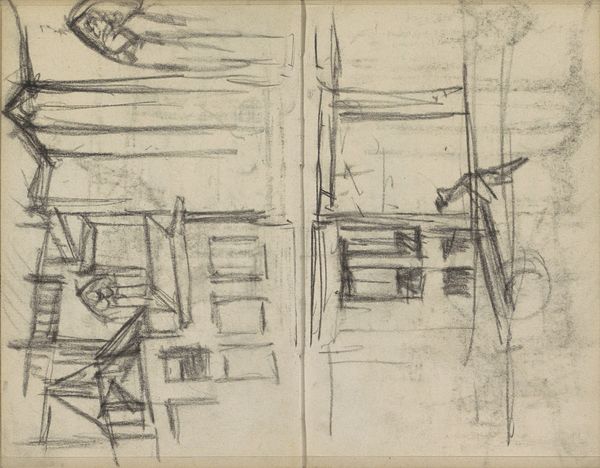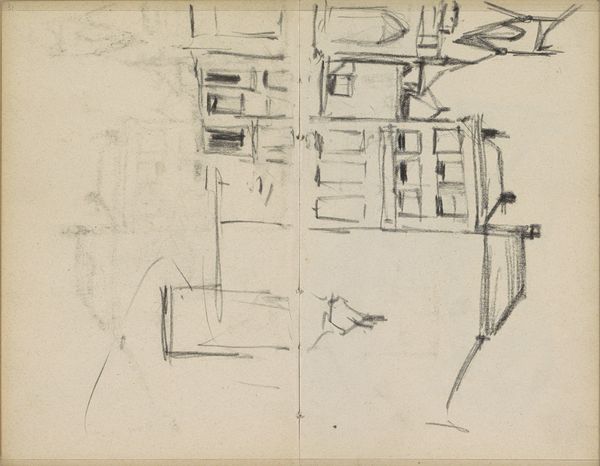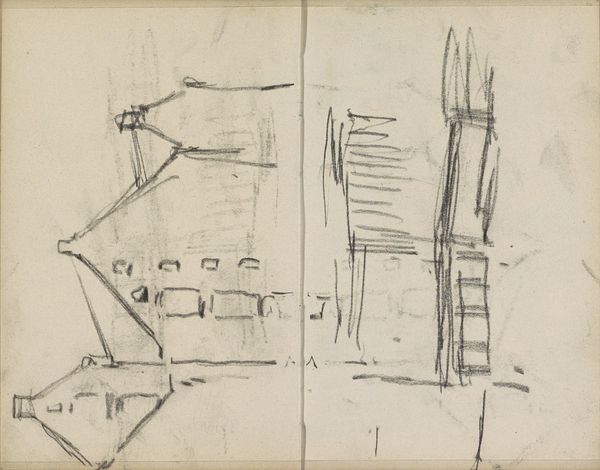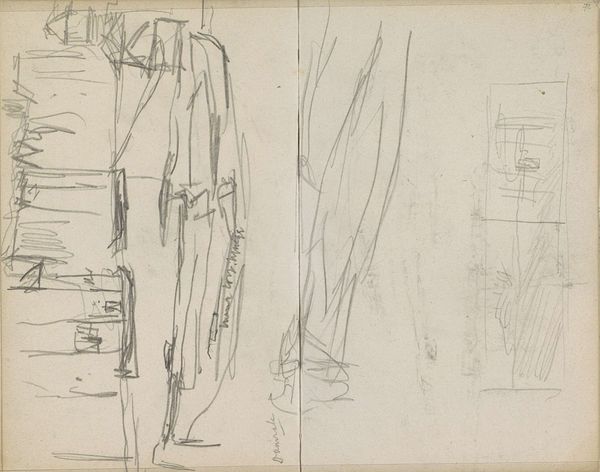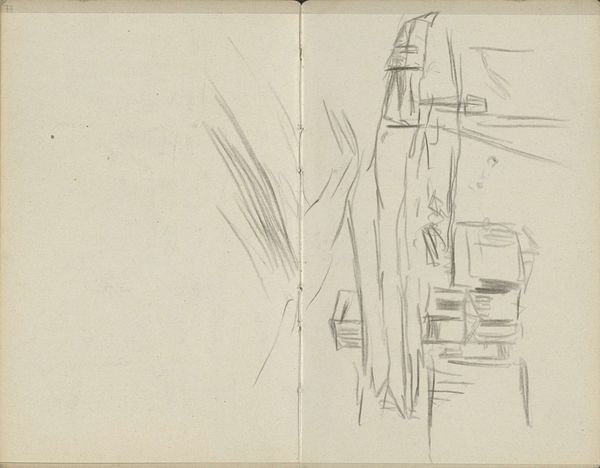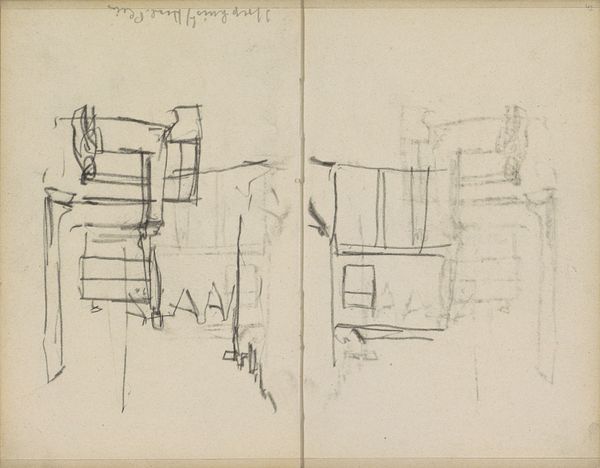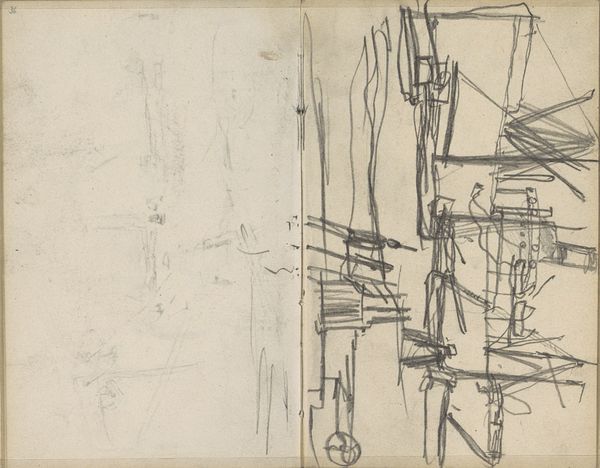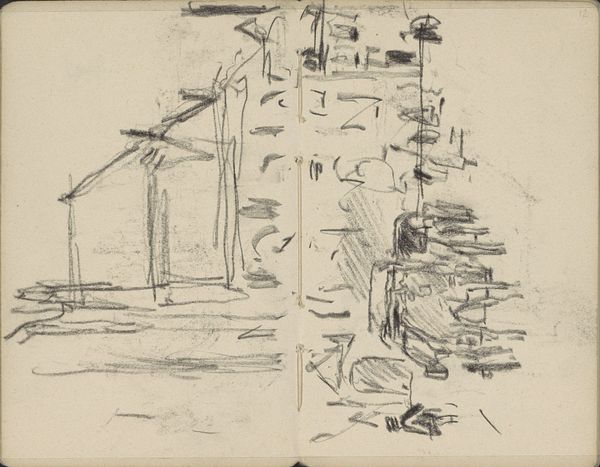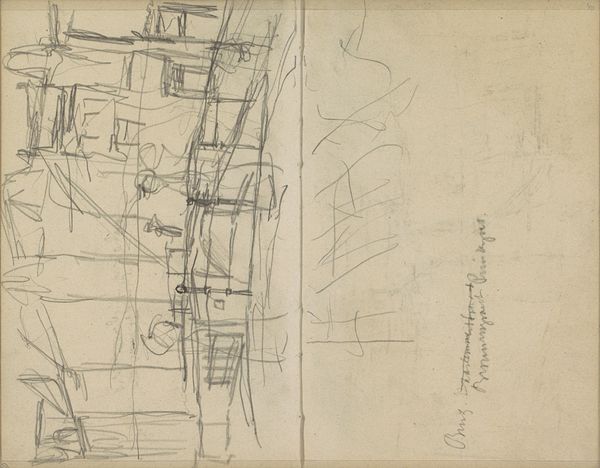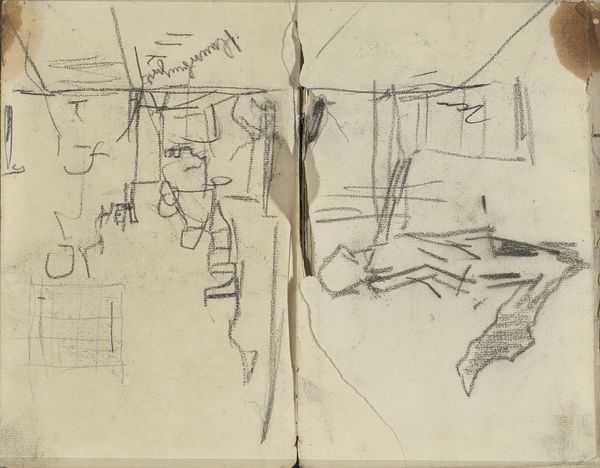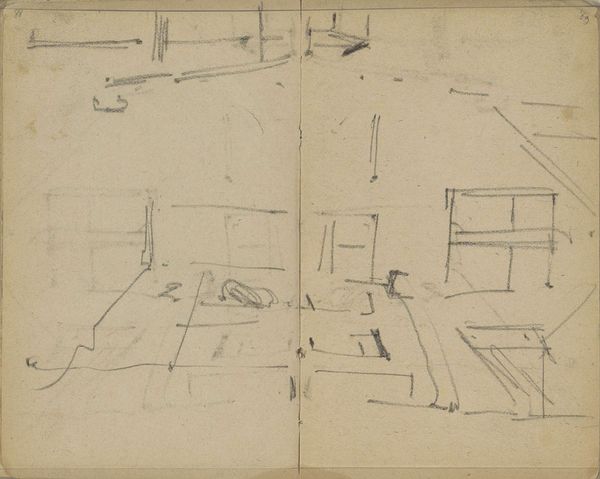
Gezicht op de hoek van de Haarlemmerstraat en de Korte Prinsengracht te Amsterdam c. 1906 - 1923
0:00
0:00
georgehendrikbreitner
Rijksmuseum
Copyright: Rijks Museum: Open Domain
Editor: This drawing, "Gezicht op de hoek van de Haarlemmerstraat en de Korte Prinsengracht te Amsterdam" by George Hendrik Breitner, was likely created between 1906 and 1923 using pencil on paper. It feels very immediate, almost like a quick sketch capturing a fleeting moment. What catches your eye when you look at it? Curator: I'm drawn to the sketch's ability to convey a sense of place and time through minimal means. The buildings are only suggested, almost skeletal, but that's enough for our minds to fill in the blanks, isn't it? It's like a coded message, a cultural shorthand. What do you think these quick strokes evoke? Editor: I see a kind of honesty in the unrefined lines. It’s not trying to be perfect, it’s just trying to capture something real. But what cultural meanings might be embedded in such a simple sketch? Curator: Think about Amsterdam itself, its identity as a bustling port, a centre of trade and immigration. The implied architecture evokes the solidity and permanence of Dutch society even if the rendering appears to be an impromptu sketch. It is also important to remember that during the rise of modernity and photography, sketches served a very particular cultural function. The artist's 'hand' provided a uniquely 'authentic' image. What impression does it leave you with, considering that cultural context? Editor: So, the sketch isn't just a depiction of a place, but also a symbol of cultural values and a reaction to artistic shifts? I’m starting to see the layers beneath the surface! Curator: Exactly! The image holds history. What seems simple holds encoded visual meaning which becomes richer as you keep on learning. Editor: I never thought I could learn so much from a simple drawing like this. I appreciate you sharing these observations!
Comments
No comments
Be the first to comment and join the conversation on the ultimate creative platform.
